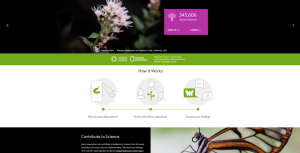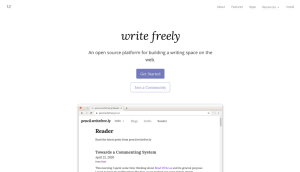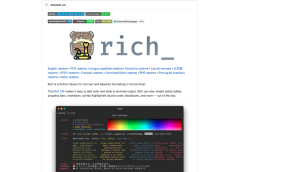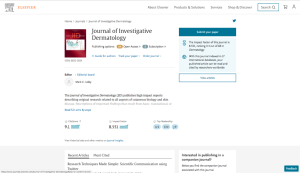Theme: Skincare Science
Back to Top
|
 |
|
LabMuffin Beauty Science Blog
|
Science |
|
This informative and often amusing blog is the brainchild of Michelle Wong, a chemist and science educator from Sydney, Australia. Using a mix of text, photos, videos, and even the occasional slideshow, Wong explains the science behind cosmetics and sorts fact from fiction. With a variety of topics covered, from sunscreen and vitamin C, to misinformation and marketing, viewers will be sure to find great content to enjoy. Blog posts on the site are organized by keyword, with some posts more heavily science-focused, while others are sorted according to specific cosmetics brands. Visitors can see the most recent posts on the page linked above or click "Browse" to access the full archive. Wong is a qualified cosmetic chemist with a PhD in organic medicinal chemistry and ample experience in science education and communication. This site would be helpful in a number of settings, offering a particularly good way to help students see the direct link between science and the products that many use on a daily basis. Wong cites and links to relevant scientific literature in her posts, encouraging users to take a deeper dive. [REB] |
|





|
|
 |
|
LearnDerm
|
Science |
|
LearnDerm offers free educational resources to supplement medical school curricula in dermatology. The LearnDerm Tutorial consists of a set of five lessons, covering skin examination, lesion identification, body location and distribution, configurations, and variations in morphology. From the page linked above, visitors can click "Get Started" to dive into the tutorial or use the "Lessons" drop-down menu to navigate to any of the five lessons or the follow-up quizzes. Each lesson provides an overview of the contents, definitions of key terms and techniques, and visual reference materials to aid learning. Lesson contents can be navigated using forward and back arrows. For example, the Skin Exam lesson explains how to perform a complete skin exam, including preparation of the exam space, areas of the body to examine, palpation of the skin, diascopy, and examination of the texture and size of skin features. The full tutorial should take 60-90 minutes to complete. The LearnDerm visualizations were developed by VisualDX and produced under the supervision of an editorial team of doctors from the University of North Carolina, University of Rochester, and University of California Los Angeles, including Lowell A. Goldsmith, Art Papier, and Noah Craft. [MJZ] |
|





|
|
 |
|
Dermatology: Trip to Skin Course
|
Science |
|
What is the largest organ in the human body? Hint: it is not in the body, but covers it completely. When most think of an organ, skin does not first come to mind, but it is indeed an organ, and like all organs, its health is crucial to our overall well-being. However, skin health is easy to overlook because this complex part of the body has unique structures, functions, and needs. Medical professionals and general audiences may enjoy this free dermatology course, available from Novosibirsk State University through the Coursera platform. Taught by dermatologist Irina Sergeeva, this free five-week course will introduce users to skin health. The material covered in the course includes topics such as skin structures and functions, the environment's effects on skin, skin at different ages, inflammatory skin diseases, and skin infections. The course, which is appropriate for experts and beginners alike, allows learners to "take a trip to the skin," and explore the field of dermatology. On the page linked above, visitors may review the "Syllabus," find "Reviews" of the course, explore "Enrollment Options," and read an "FAQ" before enrolling. [JMW] |
|





|
|
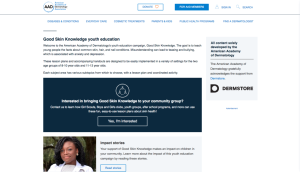 |
|
Good Skin Knowledge: Lesson Plans and Activities
|
Science |
|
Skin health is important to overall well-being and self-confidence. On the page linked above, health educators will find more than 30 lesson plans designed to teach students ages 8-13 about healthy skin, hair, and nails. The lessons are part of the Good Skin Knowledge education campaign, which seeks to "teach young people the facts about common skin, hair, and nail conditions," and reduce the teasing, bullying, and anxiety that young children face as a result of misunderstandings about conditions such as acne, dandruff, eczema, and warts. The lessons are divided into 3 categories - acne, skin health, and sun protection - and the materials are distinct for each age group (Ages 8-10 and Ages 11-13). For instance, the lesson "Skin: Daily Habits" for the younger age group is a 30-minute lesson that covers the importance of showering and face washing. The lesson plan features introductory materials, interactive elements, and independent practice, including a worksheet that is available to download. The materials in these lessons were developed by the American Academy of Dermatology, an association of more than 20,000 physicians founded in 1938. [MJZ] |
|





|
|
 |
|
INCI Beauty App
|
Science |
|
According to the creators of the INCI Beauty App, there are "almost 15,000 different chemicals" used in the manufacture of cosmetics, but consumers are often unaware of which ones may be harmful to the environment or human health. Cosmetics users and professionals alike may find answers to their questions with this French app (which is also available in German, Spanish, Italian, and English), which allows users to scan product barcodes or search cosmetic products by name or ingredient. Since 2017, INCI Beauty has used a scientific approach, through a partnership with the Clermont-Ferrand Sigma School of Chemistry, to enable users to analyze cosmetic products, inform themselves about common ingredients, share opinions about different beauty products, and make informed decisions about which products to buy. INCI Beauty is not funded by the beauty industry and donates 1% of its revenue to environmental organizations. The application's web page includes a Trends section that lists the most recently discussed products. Readers can follow INCI Beauty on Instagram (@inci.beauty), Twitter (@INCIBeauty), or Facebook (@incibeautyfr). [JMW] |
|





|
|




